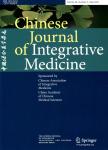Bioinformatics Based Therapeutic Effects of Sinomenium Acutum
Bioinformatics Based Therapeutic Effects of Sinomenium Acutum作者机构:Faculty of Chinese MedicineMacao University of Science and Technology Department of NephrologyShenzhen Traditional Chinese Medicine Hospital School of Information Science and EngineeringLanzhou University
出 版 物:《Chinese Journal of Integrative Medicine》 (中国结合医学杂志(英文版))
年 卷 期:2019年第25卷第2期
页 面:122-130页
核心收录:
学科分类:10[医学]
基 金:Supported by the National Natural Science Foundation of China(No.81072982)
主 题:Sinomenium Acutum bioinformatics analysis ingenuity pathway analysis network pharmacology
摘 要:Objective: To decipher the possible mechanisms of Sinomenium Acutum(SA) in treating diseases by a bioinformatics method. Methods: SA ingredients were searched according to Chinese Pharmacopoeia, Chinese Medicine Dictionary and Traditional Chinese Medicines Database(TCMD). Active compounds and target proteins of SA were acquired through the Pubchem platform. Pathway, network and function analyses of SA were performed with ingenuity pathway analysis(IPA), a bioinformatics analysis platform. Disease, biofunction-target networks were established with Cytoscape. Results: Eighteen ingredients from SA were obtained. Seven active ingredients with 31 active target proteins were acquired according to PubChem Bioassay test. By IPA analysis, 277 canonical pathways belonging to 17 function categories were collected, 23 kinds of diseases, 21 categories bio-functions were obtained. Based on P value, calculated by IPA, the top 5 significant pathway of SA targets include phosphatidylinositol 3 kinase/Akt(PI3 K/Akt) signaling, prostate cancer signaling, macrophage migration inhibitory factor(MIF) regulation of innate immunity, Guanosine-binding protein coupled receptor(GPCR) signaling, and ataxia telangiectasia mutated protein(ATM) signaling. Disease and bio-function network analysis indicated that mitogen activated protein kinase 1(MAPK1), MAPK3, p65 nuclear factor κB(RELA), nuclear factor of κB inhibitor alpha(NFκBIA), interleukin 1β(IL-1β), prostaglandin G/H synthase 2(PTGS2) and tumor protein 53(TP53) were the critical targets in various diseases treated by SA. Conclusions: In the different view of target, pathway, disease and bio-function, inflammation was found to be a central theme in many chronic conditions. SA could be used not only as an anti-inflammatory agent, but also for the treatment of cancers, neurological diseases, psychological disorders and metabolic diseases.



